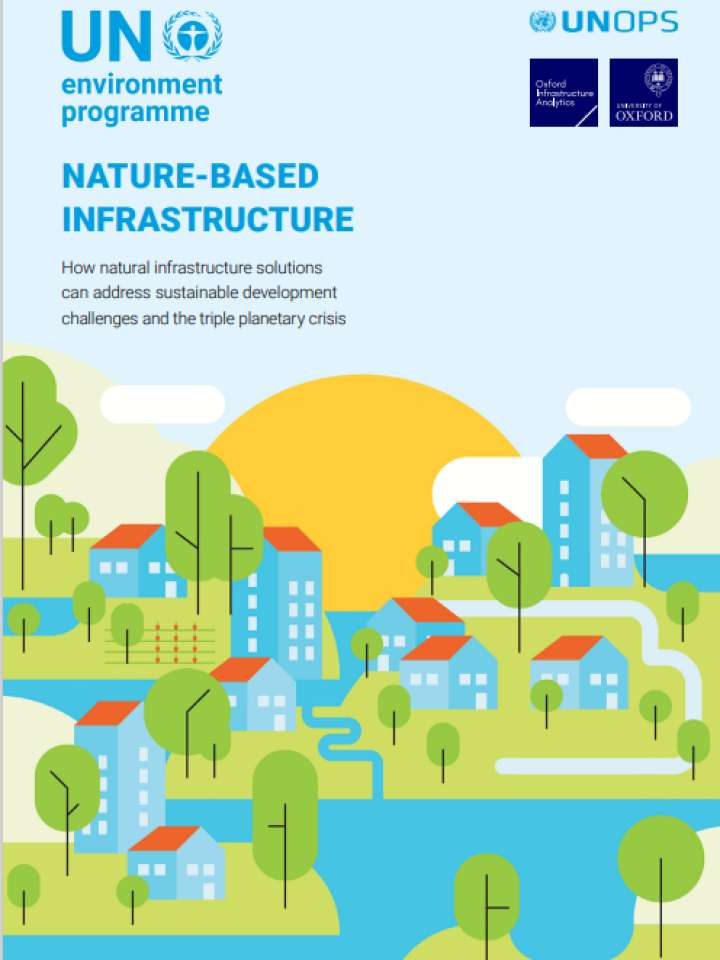Nature-based solutions infrastructure: How natural infrastructure solutions can address sustainable development challenges and the triple planetary crisis
A new report from the UN Environment Programme, UNOPS and the University of Oxford highlights the contributions of nature-based infrastructure solutions to sustainable development, climate action and biodiversity. This report aims to support efforts to increase the use of nature-based solutions as a key component of sustainable infrastructure systems. In addition to charting the benefits, it also presents the main barriers to implementing nature-based infrastructure solutions and introduces some recommendations on what different actors can do to overcome these obstacles. Drawing on examples from Belgium, Tanzania and more, the authors further emphasize the key contributions of nature-based infrastructure solutions to mitigation and adaptation objectives within the Paris Agreement, like helping to remove or reduce greenhouse gas emissions that result from the construction and operation of new conventional – or “grey” – infrastructure.
According to the report, nature-based infrastructure solutions can influence 79 per cent of all targets across the Sustainable Development Goals (SDGs). The research finds that the greatest impact on the SDGs is achieved when nature-based solutions are combined with built infrastructure assets. In combination, they influence up to 95 per cent of all SDG targets. Key among the recommendations is the need for collaboration between policymakers and practitioners to integrate nature into “mainstream” infrastructure planning and design. In addition, it calls for more data on the long-term performance of nature-based infrastructure and the development of innovative financing models that can account for its wide ranging benefits.
Explore further
